The video version below includes a demo tour of the trailer that is omitted from the audio podcast above.
We did it. We bought a 2013 Aliner Scout, a pop-up trailer with a 1,174-pound dry weight we can tow with our 2017 Chevrolet Bolt EV.
The trailer was living in Brooksville, Florida, about three hours away from our home in Jacksonville. To give ourselves a full day to get it home, we traveled to the area on the evening of Thursday, March 3, stopping in Bushnell to charge so we’d have plenty of range to start the day.
We spent the night in a cheap motel about 20 miles from the trailer, arriving there about 9:30 AM. The owners had it set up when we arrived. We got in to check it out. Then we watched them put it down and practiced doing it ourselves.
We hitched it up and pulled it out of a spot behind the house where it had been stored for months. After driving it around the block, we used some gifts from thoughtful friends in Utah, including a digital tire gauge and a tire inflator to get the tires ready for the ride home.
We negotiated a fair price and paid for the trailer and hit the road…
…with one catch. The car’s wiring didn’t match the trailer’s connection for the lights and such. The trailer has a seven-way connector and the car has a four-way version. Our naivete caught us here. We’d never seen a seven-way connector before.
We towed the trailer straight to an RV dealer to buy an adapter to connect the trailer to the car. We couldn’t make it work. Tom, at Register RV Center, volunteered to help us make it work. He did! Thank heaven! We were on our way.
There is some irony in this problem. The seven-way adapter does two things the four-way doesn’t. One is to control brakes. Our trailer has no brakes. The other is to charge the battery. We’re planning to use solar panels to charge ours.
We charged twice on the way home. The first time, back in Bushnell, we had to disconnect the trailer to charge. In Gainesville, however, we were able to pull through adjoining spots to charge with the trailer in tow.
We got home at 7:30 pm, grateful we had planned a full day for the project.
Devin will share some nerd data below, but most people’s curiosity will be fully sated just knowing that towing the trailer reduced the Bolt’s range by one-third, to about 160 miles.
Devin’s Nerd Data
The chart below shows the data we gathered from the trip, showing a pretty apples-to-apples comparison of the mpk (miles per kwh) impact of the trailer.
Some observations about the trip:
The trip home was longer due to the need to swing by the RV dealer for the adapter
The technique score given by the car improved a bit with the trailer in tow with slower starts and stops and slightly slower speeds
Remember the car interprets the weight of the trailer as uphill topography reflected in the terrain score
Our drive home included using the A/C most of the day
The cool evening temperatures on Thursday were followed by a hot day for driving home, which the car loves
Charging Record for the Trip:
For my fellow nerds, I’ve summarized our charging experience on the road. We pay $0.31 per kwh so the cost is modest, especially compared to gas these days. At home, we pay effectively about half that.
The low charging rate on Saturday afternoon was likely due to the fact that the car was barely below half full when we started. Charging begins to slow at the half-tank line and is quite slow regardless of the charger when above 80 percent full.

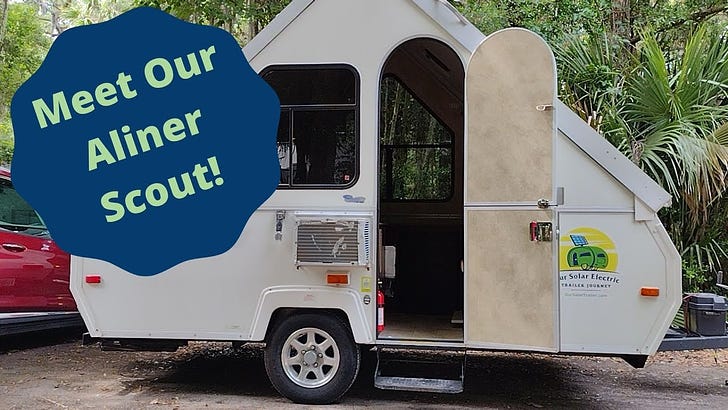



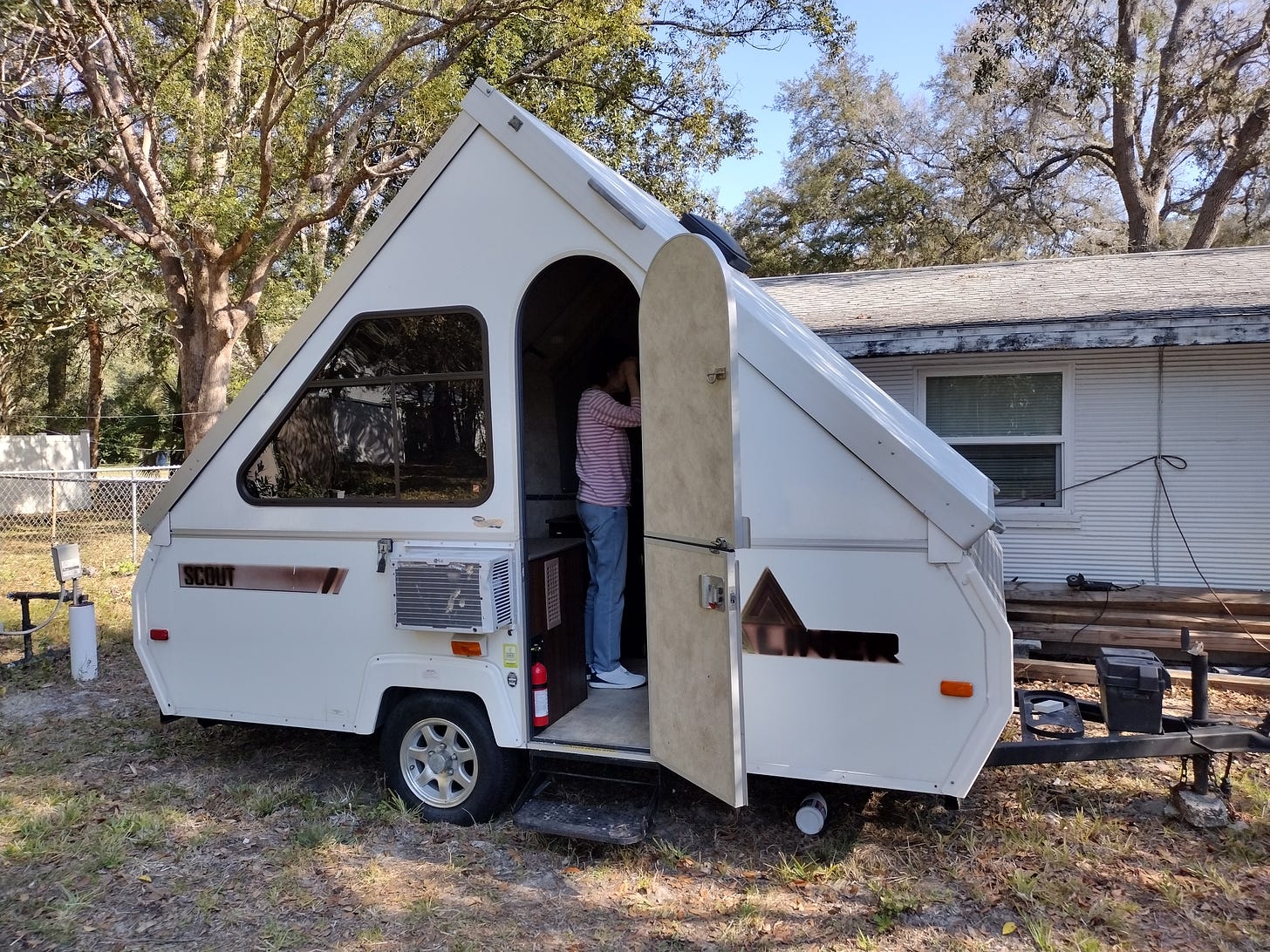
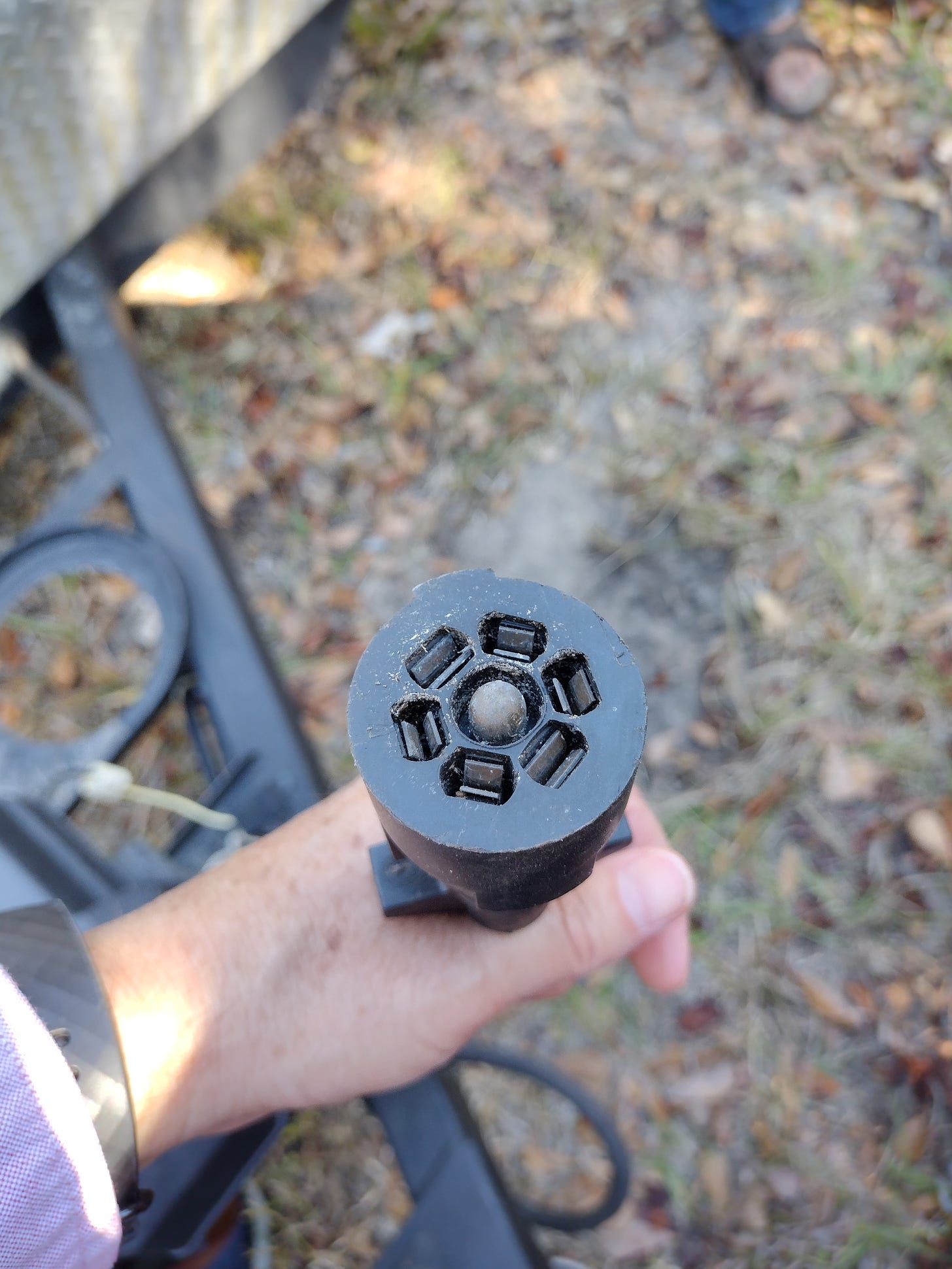
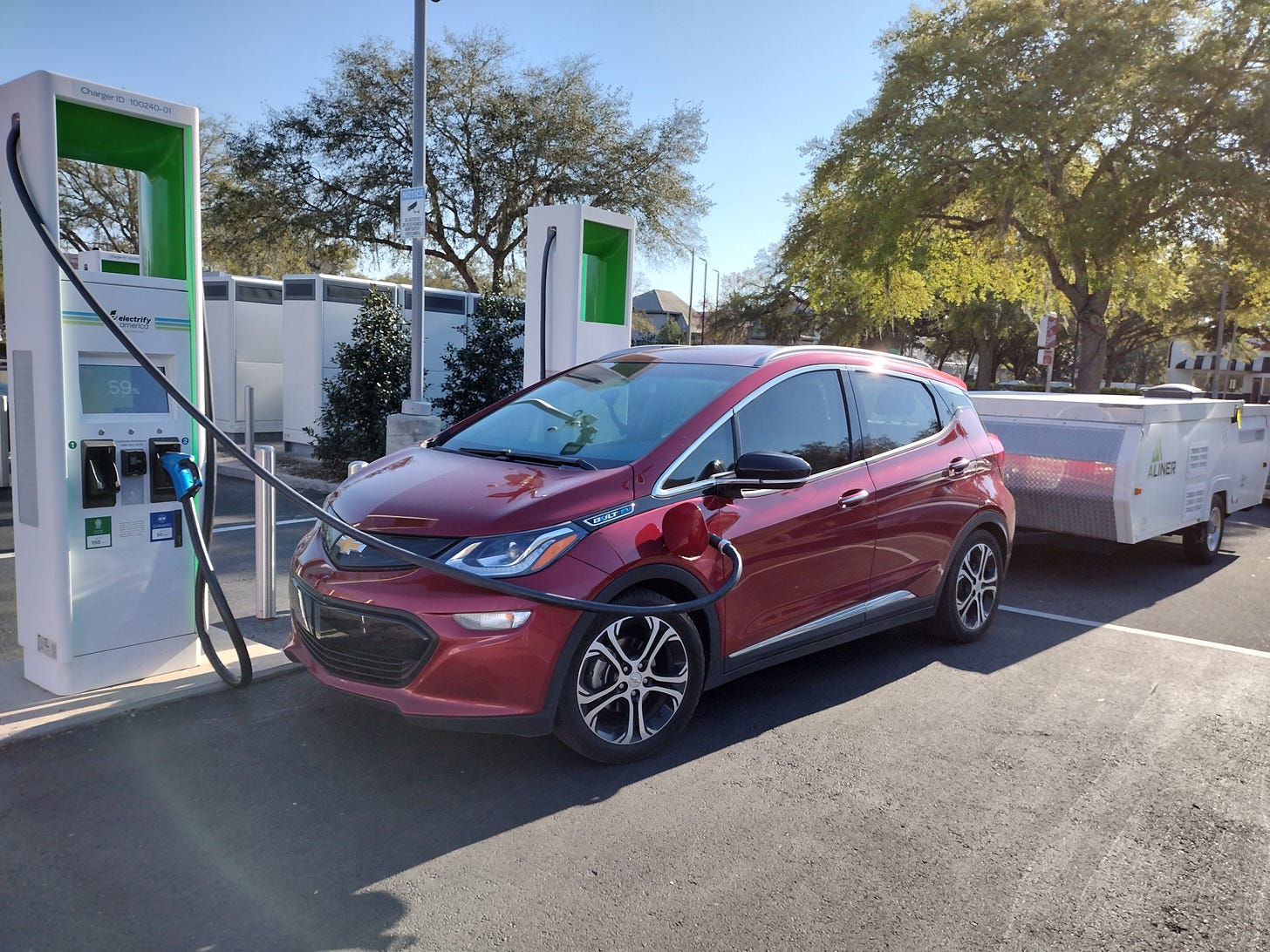
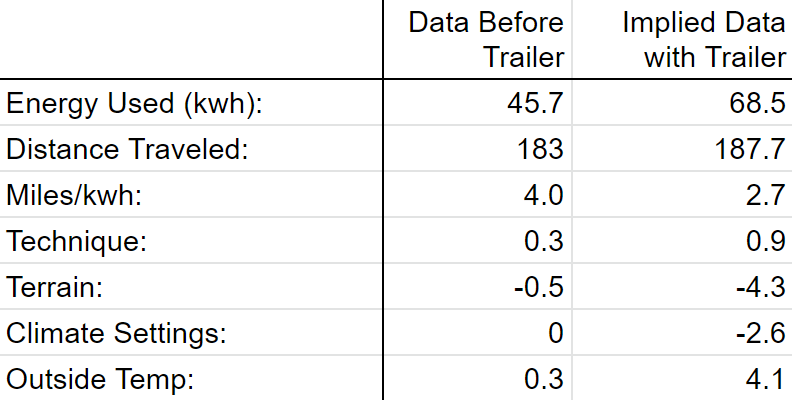




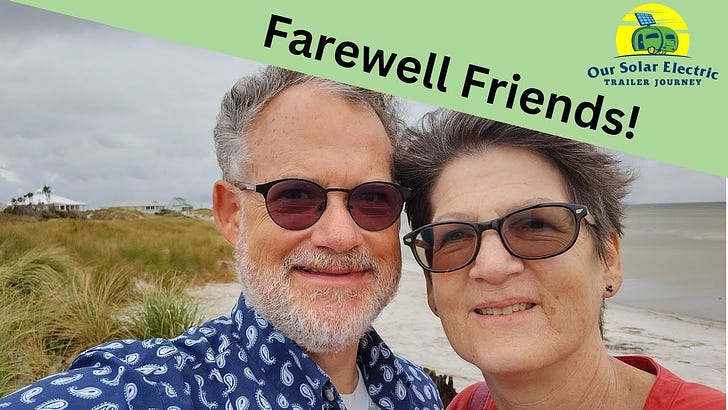


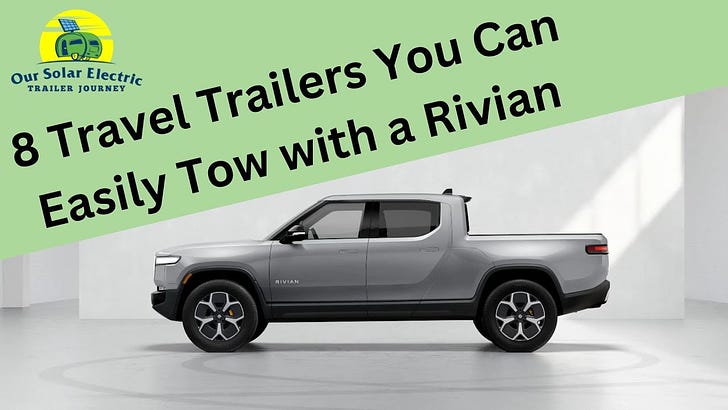

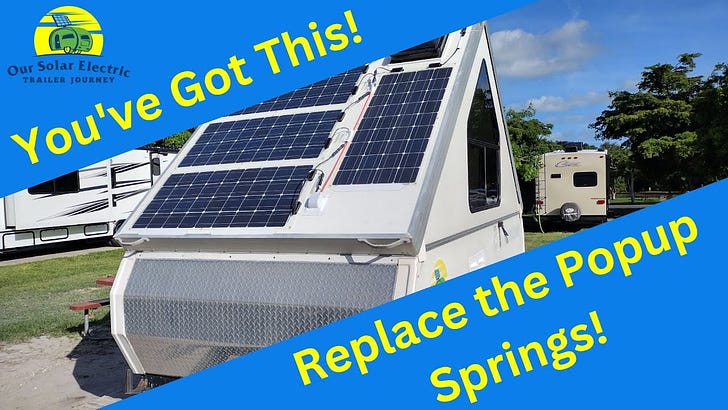


Meet Our Aliner Scout